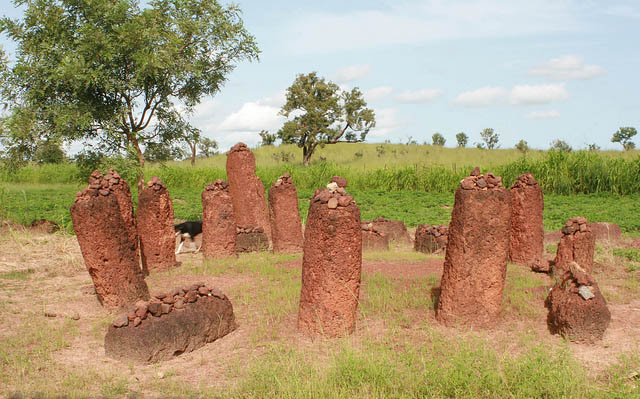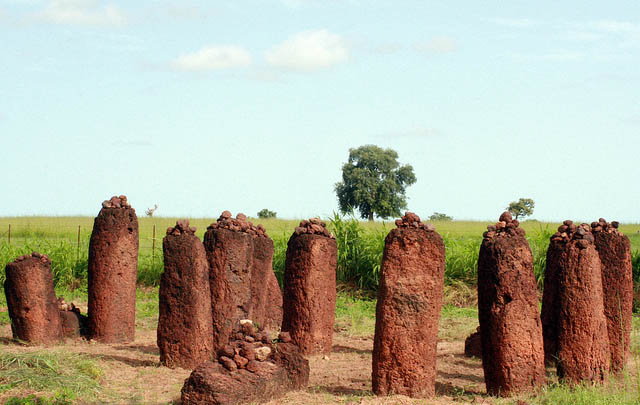The site consists of four large groups of stone circles that represent an extraordinary concentration of over 1,000 monuments in a band 100 km wide along some 350 km of the River Gambia. The four groups, Sine Ngayène, Wanar, Wassu and Kerbatch, cover 93 stone circles and numerous tumuli, burial mounds, some of which have been excavated to reveal material that suggest dates between 3rd century BC and 16th century AD. Together the stone circles of laterite pillars and their associated burial mounds present a vast sacred landscape created over more than 1,500 years. It reflects a prosperous, highly organized and lasting society.
 |
| Wassu stone circles, Gambia |
Statement of Significance
Criterion (i): The finely worked individual stones display precise and skilful stone working practices and contribute to the imposing order and grandeur of the overall stone circle complexes.
Criterion (iii): The nominated stone circles, represent the wider megalithic zone, in which the survival of so many circles is a unique manifestation of construction and funerary practices which persisted for over a millennia and a half across a large sweep of landscape, and reflects a sophisticated and productive society.
Historical Description
Although the stone circles have been the subject of research over the past 100 years, and several parts of the nominated site have been excavated, more could be elucidated about the megalithic zone as a whole.
Material from excavations suggests that the burials took place mainly during the first and early second millennia AD. However the relationship between the burial mounds and the stone circles has yet to be fully ascertained. It is not clear whether the burials pre-date the circles, whether they are contemporary or whether perhaps the circles pre-date the burials.
The excavations by Tholmans et al were published in 1980 and those by Galley et al in 1982. Excavations were restarted by Lawson in the Gambia in 2002 and by Hall and Bocoum in 2001-2004 in Senegal.
Some of the quarry sites have been identified, although none are in the nominated area. However only a very small proportion of the megaliths can be traced to a source.
The burials that have been excavated appear to reveal a less ordered regime. They show mass burials with bodies thrown haphazardly into graves, suggesting either an epidemic or some sort of sacrifice.
The Manding people who currently live in much of the megalithic zone seemed to have moved into the area in the 16th century, after the construction of the megaliths, and so do not appear to be related to the megalith builders.
 |
| The Gambia Wassu Stone Circle Village |
 |
| The Gambia Wassu Stone Circle |






























Say something! Leave a Reply ?